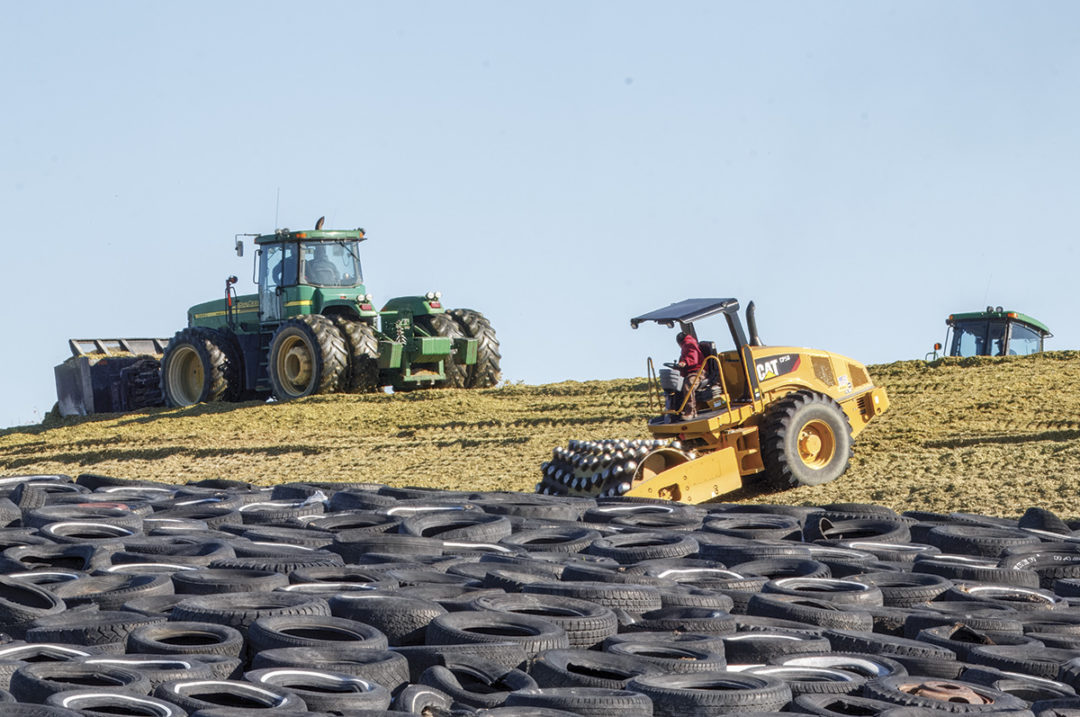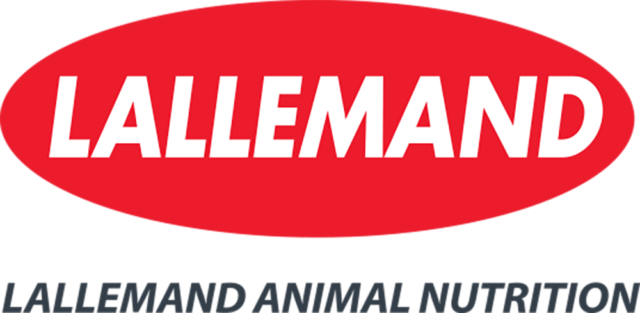Anyone who has fed clean, well-fermented silage knows the smell as slightly acidic but otherwise nearly odorless. That’s because the main fermentation acid, lactic acid, is nearly odorless. Foul-smelling silage is a sign of a poor fermentation, possibly clostridial fermentation.
Clostridia are spore-forming, anaerobic gram-positive bacteria that ferment carbohydrates, lactic acid, as well as amino acids and proteins. When clostridia drive the fermentation process, they lead to a reduction in feeding value and the production of biogenic amines that are foul-smelling compounds.
Clostridial fermentation can be detected in silages by its unpleasant smell, slimy appearance and dark coloration. One reason for the nasty odor is butyric acid, which has a strong "rancid butter" smell. Butyric acid is produced from clostridia fermenting sugars or lactic acid, which also involves substantial dry matter and energy losses. Moreover, some clostridia species ferment amino acids, producing toxic amines and ammonia-nitrogen, so the odor could be more putrid or even fishy depending on the type of clostridia and subsequent fermentation profile. These strong odors can cause animals to reduce intake or refuse to consume the silage altogether.
Where does the clostridia in the forage come from?
Clostridia in silage is often related to soil contamination of the forage during harvest and packing. Minimizing soil contamination is key to reducing the risk of clostridial fermentation. The next step is a rapid drop in the pH of the forage, at ensiling. At a pH of 4.5, the growth of the undesirable bacteria is relatively slow. A pH below 4.5 is considered an insurance policy to keep clostridia under control. Corn silage is at a lower risk of clostridial fermentation due to higher cut height, lower risk of contamination with soil and fast acidification to a pH below 4.0. However, it can still occur, and producers should be aware of the risk factors.
What increases the risk of clostridial fermentation?
If the pH does not drop low enough and fast enough, the pH value can subsequently increase due to the conversion of lactic acid to weaker acids (acetic and butyric acid), with a corresponding degradation of proteins and amino acids. The risk of secondary (for example, butyric) fermentation is increased with:
- Low dry matter: Please note this threshold may be different across crop types, with alfalfa risking clostridial fermentation at a higher DM (less than 35%) as compared to corn silage or grass silage (DM less than 30%).
- Low in sugar content: i.e., some grasses and legumes
- High buffering capacity: i.e., legumes or other forages high in minerals and protein
- Soil contamination: caused mainly by low cut height and reflected in increased ash content in the laboratory analysis
How do I reduce the risk of a clostridial fermentation in my forages?
Preventing problems associated with clostridia in forages involves implementing sound management practices throughout the forage production, harvesting and storage processes. Here are key measures to mitigate the risks associated with clostridia-related issues:
-
Prior to harvest
- Manure management: Implement effective manure management practices to minimize the risk of contamination during forage growth and harvest, i.e., don’t apply manure to hayground that will be harvested in less than 28 days.
-
Harvesting practices
- Timely harvest: Harvest forages at the appropriate growth stage and dry matter to ensure optimal nutrient content.
- Cut height
- Maintain cleanliness: Minimize soil and manure contamination during forage harvesting. Use clean equipment and avoid harvesting in muddy or heavily soiled conditions.
-
Ensiling techniques
- Inoculant: Use science-based, research-proven bacterial silage inoculants to enhance fermentation, quickly reduce pH and suppress harmful clostridia species.
- Proper packing: Ensure effective packing of silage to exclude oxygen, creating anaerobic conditions that promote a favorable fermentation and rapid drop in pH below 4.5 that leads to inhibition of clostridia.
- Seal silos and bunkers: Prevent air admission into storage structures by properly sealing silos and bunkers as soon as possible once harvest is complete. This minimizes the risk of spoilage and the growth of undesirable clostridia.
-
Forage testing and analysis
- Once a forage is harvested and ensiled, the work to ensure high-quality forages for your herd does not end.
Routine forage testing – Working with your nutritionist, forage testing to assess nutritional content and identifying potential issues is a valuable tool. Monitor energy and protein levels, fiber content and digestibility, and overall nutrient composition. If you suspect a fermentation challenge, you can run a fermentation analysis, which can identify if there is an imbalance of fermentation acids (good and bad). If you suspect a spoilage problem, consider microbial analysis to identify the presence of harmful clostridia species in forages. This can help guide management strategies to minimize risks.
Education – Stay informed about current management practices, new research and technology. Maybe there is a tracking system that can help you better monitor crop conditions or forage quality. Work with your employees and encourage their personal development through on-farm trainings or trainings put on by state extension educators or industry leaders.
What are your cows telling you?
At the end of the day, this is the most important question. Are the cows consuming the TMR, or are there a lot of refusals? Is manure normal or watery? Are milk production and components reaching your targets or slipping?
Conclusions
- Clostridia can negatively impact silage quality by diminishing palatability, as well as energy and protein content.
- A rapid drop in pH (below 4.5) after ensiling and covering is key to controlling clostridia.
- Wet, dirty silage or relatively low sugar contents can lead to a clostridial fermentation.
- Butyric acid is the main product in a clostridial fermentation and has a negative relationship with pH and lactic acid concentration.
- The control for clostridia must be part of a comprehensive silage program beginning in the field and through a clean harvest, packing and covering as well as using a science-based, research-proven bacterial silage inoculant.
By integrating preventative measures into your forage management practices, you can minimize the risks associated with clostridia, ensuring the production of high-quality forages that contribute to the health and productivity of your cattle.












